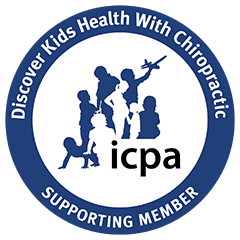Sniffling, sneezing and coughing are typically signs of a cold coming on; but for those of you that struggle with seasonal allergies, you know that’s not always the case.
What are Seasonal Allergies?
According to the American College of Allergy, Asthma and Immunology, seasonal allergies develop when the body’s immune system becomes sensitized and overreacts to something in the environment. Most allergens are airborne and include things like pollen, dust, mold, pet dander and smoke.
When a person is exposed to an allergen the body triggers the immune system to go into action. Mast cells, a part of the immune system, release a substance called histamine that attaches to the receptors in blood vessels. This causes them to enlarge. Histamine will also bind to other receptors that cause redness, swelling, itching and changes in secretions.
While “allergy season” is considered to be in the Spring, the truth is that tree, grass and plant pollination happens throughout the year. Depending on the allergy can cause symptoms all year long. Not only are allergies affected by pollination but there are also climate factors that can influence the severity of the symptoms. Some of these climate factors include:
- Tree, grass and ragweed pollens thrive during cool nights and warm days
- Molds grow quickly in heat and high humidity
- Pollen levels tend to peak in the morning hours
- Rain washes pollen away, but pollen counts can soar after rainfall
- On a day with no wind, airborne allergens are grounded
- When the day is windy and warm, pollen counts surge
- Moving to another climate to avoid allergies or airborne allergens
What Are the Symptoms?
Symptoms for allergies tend to look a lot like a head cold. However symptoms can vary and generally include: headaches/migraines, stuffy or runny nose, diarrhea, vomiting, shortness of breath, asthma-like symptoms, swelling of the face and eyes or itchy/watery eyes. These symptoms can be annoying but generally not life-threatening, except for the sensitive asthmatic. For those diagnosed with asthma, allergy attacks may temporarily increase inflammation in the airways. Most airborne allergens are common triggers.
What Are the Typical Treatments?
Typically, a medical doctor is going to be focused on relieving the symptoms, not getting to the root cause of why you have allergies. So, they will generally recommend over-the-counter allergy medication.
For the child, a pediatrician will commonly suggest diphenhydramine (Benadryl). Before following this advice, be sure to consider the side effects associated with this chemical. These side effects include:
- Dryness of the mouth, nose and throat
- Drowsiness
- Disturbed coordination
- Upset stomach
- Dizziness
- Chest congestion
- Headaches
And in some cases there are further side effects including heart palpitations, increased heart rate, blurred or double vision, hyperactivity or excitability or nervousness or anxiety. Parents should also be aware that this same chemical is used most often in over-the-counter sleep aids including Tylenol PM.
The most popular recommended over-the-counter for adolescents and adults is cetirizine HCL (Zyrtec). This drug may provide temporary relief of runny nose, sneezing, nasal stuffiness and itchy or watery eyes associated with common inhalant allergies. However the side effects of this chemical include: drowsiness, tiredness, dry mouth, and stomach pain. Serious allergic reactions include rash, swelling of the face, tongue or throat, severe dizziness and trouble breathing.
What are Healthier Options?
Treating the symptom may seem the easiest, but it’s important to understand that the side effects increase with long term use of chemicals. The best treatment for allergies is to eliminate the source of the allergens. Here are some simple steps to take to help remove the most common air and food allergens from you and your children’s lives.
- Replace old pillows, rugs and blankets.
- Wash, dry and pack stuffed animals in airtight containers.
- Wash and dry bed linens at least twice a month.
- Avoid white sugar.
- Avoid dairy products.
- Avoid grains.
- Eat whole foods that are prepared at home.
Are there Healthier Choices?
Beyond removing the allergens from your home, you may still be experiencing symptoms from something missed or outside allergens. There are other options to help you manage your symptoms:
- Essential oils: peppermint, basil, eucalyptus, lemon and tea tree oil are the top 5 essential oils when dealing with allergies
- Vitamin C: taken daily can block the histamine that causes the allergy symptoms
- Apple Cider Vinegar: mix 2 tablespoons of ACV with 4 ounces of water and 1 tablespoon of natural, local honey up to 3 times a day
- Raw Honey: 2 tablespoons of natural, local honey up to three times a day
- Zinc: helps control inflammation in the respiratory tract and supports proper immune function
The Chiropractic Factor
One of the primary causes of allergies is an impaired immune system, which increases the risk of allergic reactions. “This occurs when the immune system becomes stressed due to an overload of toxins,” says C. Gableman, MD, a practitioner of environmental medicine.
Dr. Elyssa recognizes the role a healthy nervous system plays in a healthier immune system. Many parents report that their children’s allergies improve with regular chiropractic care. So before you reach for a chemical, reach for the phone and call Dr. Elyssa to schedule an appointment to help improve the nervous system of you and your family.
To learn more about the benefits of chiropractic care and the benefits of making it part of your family’s wellness lifestyle click below to schedule a complimentary consultation with Dr. Elyssa today.



